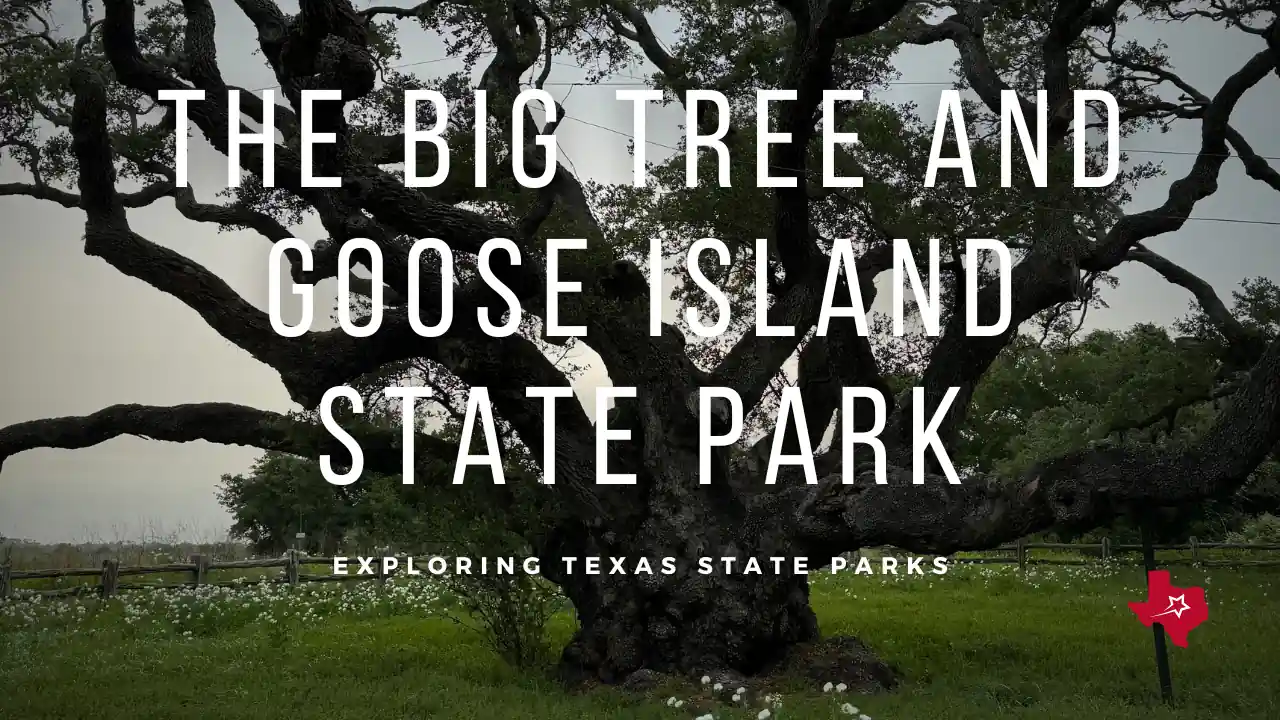Visiting Goose Island State Park and the Historic Big Tree
This ancient Texas giant has survived 2,000 years and 50 hurricanes while harboring secrets from Karankawa councils to Civil War battles. What stories remain untold?

Goose Island State Park houses Texas' oldest live oak, the Big Tree, a massive 800-2,000 year old survivor that's weathered 50+ hurricanes. Located 10 miles northeast of Rockport via Highway 35, this natural wonder stands 44 feet tall with a 90-foot crown spread. Visitors can camp at 126 sites, watch over 300 bird species, and fish along the coastline. The tree's gnarled branches have witnessed everything from Karankawa councils to Civil War battles. The ancient guardian waits.
The Ancient Guardian: Discovering Texas' Oldest Live Oak
When visitors first encounter the legendary "Big Tree" at Goose Island State Park, they're standing in the presence of living history. This ancient Virginia live oak has witnessed anywhere from 800 to 2,000 years of Texas history which helps make it the oldest living tree in the state. Period.
It's just massive. The trunk measures between 36 and 45 feet around, so wide infact that more than seven people must join hands to encircle it. At 44 feet tall with a 90-foot crown spread, it once held the title of America's largest live oak.
This silent witness has reportedly seen it all: Karankawa councils, Spanish explorers, pirates, and Civil War battles. The tree even survived Hurricane Harvey in 2017. Tough old thing.
Though visitors can't touch it anymore due to conservation rules, they can still marvel at this natural monument that refuses to die. The tree is protected by several conservation measures including metal brackets that support its massive branches. Ongoing genetic research may eventually determine its exact age, settling the debate between the various estimates of its lifespan.
Finding Your Way to Goose Island's Natural Wonders
How exactly does one reach a place where ancient oaks and coastal wonders meet? Simple. Head to 202 S. Palmetto St. in Rockport, about 10 miles northeast of town.
Follow State Highway 35, then turn east on Park Road 13. Two miles later, you've arrived.
Inside, paved roads like Trout Street and Redfish Road connect everything. Want to see The Big Tree? It's a mile from headquarters and you just have to follow the signs.
They're everywhere, actually. Unmissable.
The park caters to everyone. Wheelchair-accessible trails. Bike-friendly paths. Even kayak launches for the adventurous types. You can enjoy watching over 300 species of birds that make this coastal habitat their home.
Grab a free map at the entrance, or download the Texas State Parks app for GPS guidance. Old school meets new tech. Just like this place.
Many visitors like Inga C. express great excitement about seeing the magnificent Big Tree during their park visit.
Wildlife Watching in a Coastal Haven
Goose Island explodes with life at every turn. Hundreds of bird species call this park home or stop by throughout migration. The place sits smack on the Central Flyway, which is a superhighway for feathered travelers. Rare birds show up too: whooping cranes, northern aplomado falcons. Not something you see every day.
Many animals roam freely from white-tailed deer, raccoons, armadillos. They're just doing their thing in the woods and prairies.
The wetlands? That's where the real action happens. Herons, egrets, and rails stalk the shallows for dinner. Fish swim. Birds eat them. Circle of life stuff.
Best times to watch: dawn, dusk, low tide. The observation piers give prime views. Warbler Way trail has benches for the patient types. Maps at the office point you to hotspots.
From CCC Legacy to Modern Conservation Efforts

While birds and beasts captivate visitors today, the park itself stands as a monument to human hands from the past. The Civilian Conservation Corps transformed this land in the 1930s, building roads, clearing brush, and constructing the shell block Recreation Hall with local materials. Their fingerprints remain everywhere.
At the heart of it all stands the Big Tree. Ancient. Resilient. Up to 2,000 years old and still standing. The CCC cared for it first, implementing early protection measures. Now modern conservation continues their work.
The tree has survived 50 hurricanes, Civil War shelling, and Harvey's wrath in 2017. Not bad for an old oak.
Today's efforts balance visitor access with preservation includes monitoring soil, controlling irrigation, and fighting disease. A living representation of nature's stubbornness and human determination to protect what matters.
Planning Your Stay: Camping and Recreation Options

Campers seeking a coastal Texas retreat have alternatives aplenty at Goose Island State Park. The selections run deep with 126 single-family sites, including 57 with utilities, 44 premium bayfront spots, and 25 walk-in tent-only sites.
The premium full hookups? Just six available. They go fast.
Fees vary widely. Overflow camping runs $10 nightly (first-come, first-served), while premium sites cost $30. Youth groups pay $75 plus entrance fees for their dedicated area.
Recreation doesn't disappoint. Fishing from piers. Kayaking in the bay. Trails for hiking and biking. Wildlife watching with coastal birds everywhere.
And that Champion Coastal Live Oak? Right there, waiting.
Amenities cover the basics: picnic tables, fire rings, hot showers, flush toilets. Even a laundry facility.
Pets welcome. Leash required.
Exploring the Park's Diverse Ecosystems
Tucked along the Texas Gulf Coast, Goose Island State Park stands as a living showcase of coastal ecosystems packed into just 321 acres.
Live oaks dominate the mainland, sharing space with red bay woods and prairie grasses. No big deal, just an endangered whooping crane winter hangout.
The island itself? Different story. Oyster shell ridges, tidal flats, salt marshes.
Plants adapted to salty life thrive here - sea ox-eye daisy, wolfberry, cordgrass. Below the surface, seagrass beds and oyster reefs teem with life.
It's bird heaven, period. Nearly 400 species use this Central Flyway pit stop annually.
The wetlands filter water naturally while supporting blue crabs - whooping crane snacks.





